What to see and what to do in Wirksworth Derbyshire
Guide to Wirksworth in Derbyshire 2022
Details of the 2022 Wirksworth
Arts & Performance Festival TBA
The Wirksworth Festival is an exciting showcase for the visual arts with inspirational work from both international and local artists filling the streets, houses and historic buildings of this fascinating town situated right at the heart of the Derbyshire Dales
The Northern Light Cinema is tucked away in the old Malthouse on North End, here in Wirksworth. The Northern Light Cinema aims to put the fun back in film, making a trip to the flicks not just about watching great movies but about having a great night out.
To compliment our range of films, our bar serves a great range of beers, wines and spirits. All served to help wash down the range of Mediterranean-inspired food, perfectly sourced and presented.
Wirksworth in Derbyshire was once the most important lead mining centre in the country and had been since Roman times. In the Kings Field region just south of Wirksworth, anyone was allowed to search for lead, subject to the laws and customs governed by mining.
Lead mining peaked in the 17th and 18th centuries before its steady decline in the 19th century, and many of the Wirksworth`s impressive houses and other buildings were built during these prosperous times. As mines became deeper and deeper, to extract the lower ore, flooding problems became ever more severe and costly to control, and the mines became uneconomic to operate. In the 19th century easily mined lead ore was discovered on a huge scale in Australia, bringing the price of lead down to such a level that many of the mines around Wirksworth were shut down.
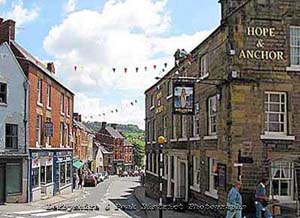
Wirksworth |
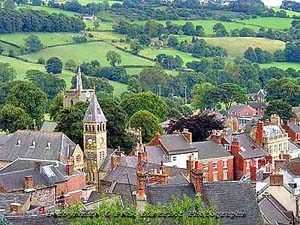
Wirksworth |
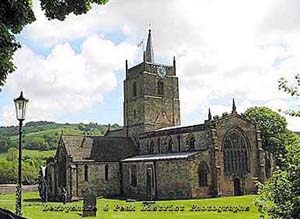
Wirksworth |
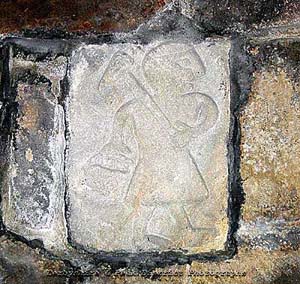
Wirksworth |
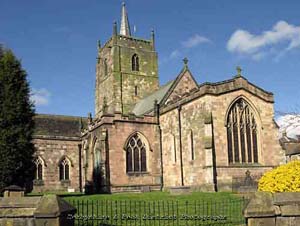
Wirksworth |
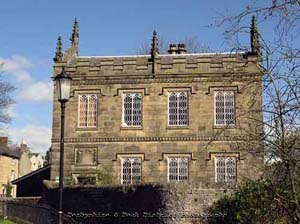
Wirksworth |
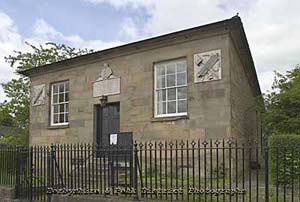
Wirksworth |
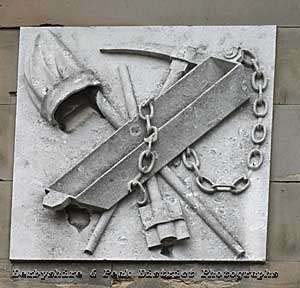
Wirksworth |
As lead mining declined, limestone quarrying took over as the main local industry. Limestone was in great demand and the arrival of he railway to Wirksworth in 1867, opened up the way for easy distribution.
With mechanisation of quarrying, the whole town and surrounding district became affected by dust, dirt, and noise. It had become industrialised and inhospitable. Those who could moved away and took their businesses with them. Buildings were left empty, falling into disrepair. Then in the 1970`s things began to change.. The local civic association decided that enough was enough and formed the Wirksworth Project` declaring much of the town centre to be a restoration zone. Work has been carried out by the Civic Trust, Sainsburys Wirksworth project and the Derbyshire Historic Buildings Trust, and now Wirksworth is fast becoming one of the most fascinating places to visit in the Peak District, full of history, neat and inviting.
Narrow alleys climb the hillside away from the market place to groups of cottages, clustered around tiny courtyards. The maze of jitties on the hillside between The Dale and Greenhill is particularly interesting and known to the locals as Puzzle Gardens. Restaurants, cafe bars, one time coaching inns and shops, including one of the oldest dispensing chemists in the county line along St Johns street, just off the market place, which is very much the centre of the town.
Across the road from the market place is Coldwell St and a left turn takes you up Chapel Lane, where the old Moot Hall stands. A Barmote court, used to settle mining disputes, has been held in Wirksworth since 1266, and here in this building since it was built in 1814. It still sits here twice a year and the jury of 24 persons are still offered the traditional free clay pipe and tobacco. On the front of the building is a carving of a miners arms, scales, pick and trough. Inside is a 14 pint, oblong bronze standard measuring dish for iron ore, with an inscription referring to the third year of Henry the Eighths reign.
Further up Coldwell St is Wash Green, which probably got its name from the days when the lead ore was washed and cleaned here In 1830 Wash Green was alive with industry, having a tape mill, brickwork's, sawmill, and a bleach dye yard. Coldwell St also contains the town hall and several inns. The Vaults pub use to be known as the Compleat Angler after the book by Izaak Walton. There is also the George and the Red Lion, an 18th century inn believed to be haunted.
Babington House up on Green Hill, near the market place was named after its association with the Babington Family of Dethick. It was Anthony Babington who was executed in 1586 for his part in the plan to release Mary Queen of Scots from jail. The building probably dates from the 17th century, though there is an inscription on the door giving 1588. The building seems to have had many uses, including that of the parish workhouse, until 1868, when it became a cottage hospital and remained so for over 60 years. It has recently been restored as part of the Wirksworth project.
Wirksworths crowning glory has to be its 13th century, 152 ft long church, with its surrounding circular pathway, from which loom up some very impressive buildings. St Marys has a crossing tower with short spire, transepts, nave and chancel with aisles. In 1272 the Dean And Chapter of Lincoln, to which wirksworth belonged, appointed the first special vicar for the church. The church went through some heavy restoration in the 19th century, particularly by Sir George Gilbert Scott between 1870 and 1876. The crossing tower is part 13th and part 14th century as are the massive piers supporting it. Also the arcades separating the nave from the aisle and the early English lancet windows in the north and south walls of the chancel and north transept.
The church contains 2 fonts, one Norman, large and plain, the other, octagonal, built by John Ashmore with florid initials.
The church also contains brasses dated 1525 to Thomas Blackwell and his wife. Other monuments include an impressive one of Anthony Lowe who died in 1555, Ralph Gell who died in 1564 and a tomb chest with alabaster effigy of Anthony Gell who had founded the Almshouses which stand at the Churches edge and the Grammar school, which was built in 1584, then rebuilt in a more gothic style in 1828. It now houses a craft centre specialising in wood. Pride of Place in the church must go to the Saxon coffin lid, dated about 800 ad and one of the important sculptural remains of that period, certainly one of the earliest Christian monuments in the Peak District. It was found by accident in 1820 when a paving was removed in front of the altar and must have been from the sarcophagus of an important person buried here. Its carvings depict the life of Christ in short stumpy figures. A figure of a lead miner known as 'towd man' with his pick and kibble is set into the west wall of the church. The carving was found at Bonsall and brought to Wirksworth in 1876.
Wirksworth`s prosperity was built on its mineral wealth, so it was perhaps only appropriate to have the National Stone Centre nearby. It was opened in 1990 on the site of disused quarries and tells the story of stone, its geological history and its industrial past. It shows how stone has been used throughout the ages for building. There is a car park for visitors who can enjoy interactive exhibitions and displays, which include gem panning, fossil casting and fossil rubbing. There is a shop which sells a vast variety of gems, jewellery and crystals, and a restaurant. Entrance is free and it is open 7 days a week, from 10am to 4pm in winter and 10am to 5pm in summer.
Just off the market place in Crown Yard is Wirksworth Heritage Centre, created in in an old silk and velvet mill. The 3 floors have interactive displays on the towns past,including a `Quarryman House Place, depicting the lifestyle of a quarryman in the early 1900`s. The unusual customs of the town such as tap dressing and clypping are also explained. The ceremony of clypping takes place in September and involves parishioners of the church, holding hands and encircling or `embracing` the church. You can purchase a guide to the town called the `Town Trail` which details all the points of interest in the town.
About a mile south of wirksworth, are 2 mills built by Richard Arkwright of Cromford fame. These are Spinning Mill, and Haraam Mill, which was amongst the first in the country to use water power. Haraam Mill was where Samuel Evans came to manage in 1814. His niece, Mary Ann Evans came to stay with him and his wife Elizabeth. She was so fascinated by what she saw she wrote a book about Wirksworth, called Adam Bede. Mary Evan`s pen name was George Elliot and the Adam Bede and Dinah Morris that she wrote about were her uncle and aunt. Wirksworth was called snowfield.
On the road between Wirksworth and Cromford can be found one of the most striking and conspicuous landmarks in the district, Black Rocks. It is often used by climbers and has superb views over the Derwent Valley. At the foot of the rocks is a picnic area and car park and access to the High Peak Trail, which was once the railway line that transported stone to Cromford Canal.
Wirksworth wells are dressed on spring bank holiday and there is also an annual arts and crafts festival in September.
Directions for Wirksworth
From Derby, take the A6 north. Just before reaching Duffield, take a sign posted left turn onto the B5023, and continue on this road to Wirksworth.
Other nearby places of interest
Cromford. Please click to view.
Middleton by Wirksworth
Middleton by Wirksworth is a small village with extensive quarries and spectacular rock and cliff faces, just north of Wirksworth. There some superb views across the wooded valley of the Via Gellia. D.H.Lawrence lived here for a year in a small house overlooking the via gellia, called mountain cottage. The village featured in his book `The Virgin and the Gypsy` where it was called Woodlinkin.
Nearby is Middleton Top, with its Engine House. It contains a beam engine built in 1829 by the Butterley Company and was used to haul wagons up the 1 in 8 Middleton incline on the Cromford and High Peak Railway. The Engine House is open from Easter to October, with the engine steamed on the first weekend of the month. The visitors centre here is open all year round at weekends.
Steeple Grange Light Railway runs along a little part of the old Cromford and High Peak Railway, from Steeplehouse Station to Dark Lane Quarry, now disused and overgrown. It is open only on Sundays and Bank Holidays from Easter to the end of October, and Saturdays during the summer holidays, 12pm to 5pm.
More information on attractions around Wirksworth
National Stone Centre
Run by a small group of volunteers and set within six former limestone quarries in the heart of the Derbyshire Dales, on the edge of the Peak District National Park, and close to the Derwent Valley Mills World Heritage Site, the National Stone Centre (NSC) is a 40 acre Site of Special Scientific Interest (SSSI), for its geological formations, offering outdoor and indoor activities for all.
• Outdoor fossil trails around our free to access site
• Visitor Centre with shop, café and “Building Britain” Exhibition
• Geo walks and picnic areas
• Childrens play area
The centre holds popular courses in Dry Stone Walling and Stone Carving.
More information on www.nationalstonecentre.org.uk
Wirksworth Heritage Centre is closed for re-development. Visit website www.storyofwirksworth.co.uk
Steeple Grange Light Railway, Near Wirksworth
An 18 inch gauge line built on the trackbed of a branch of the old Cromford and High Peak Railway - now the High Peak Trail
Tel 01629 55123
Eccelesbourne Valley Railway stretches from Wirksworth to Duffield near Derby. The railway operates passenger services mainly using heritage diesal railcars and on selected day steam hauled services between Wirksworth and Ravenstor. Special events run throughout the year.
Stoney Wood is Wirksworth's Millenium woodland and is an ideal spot for walking and picnics.
|